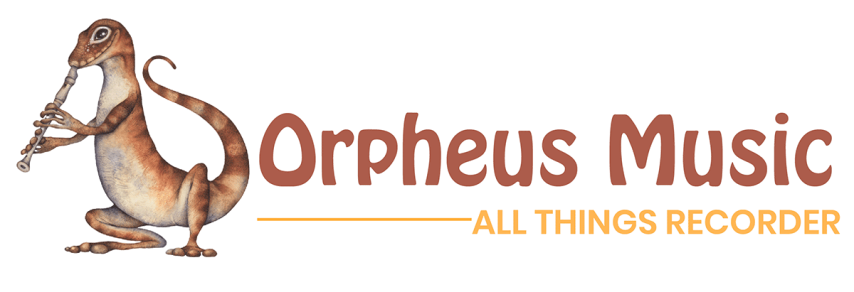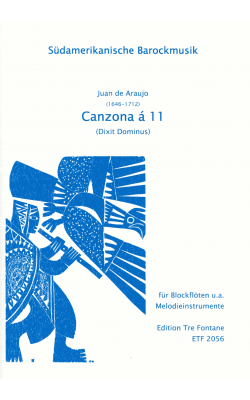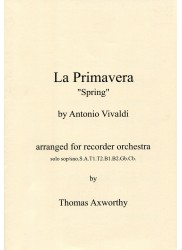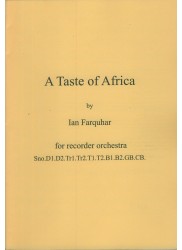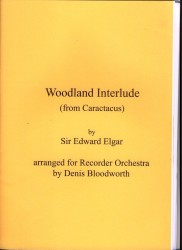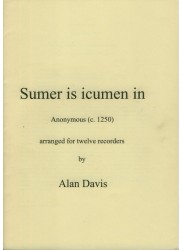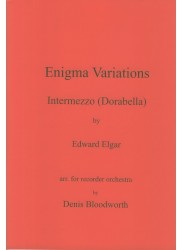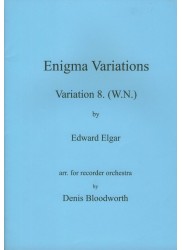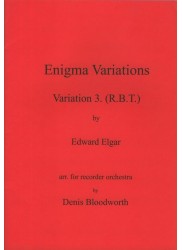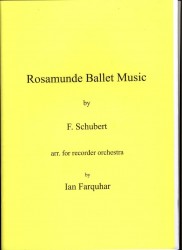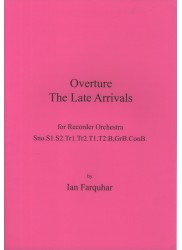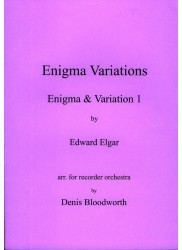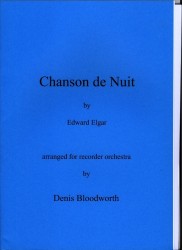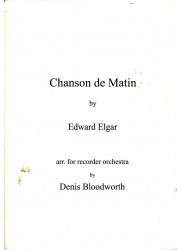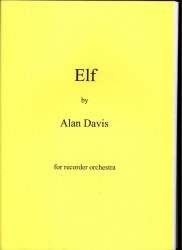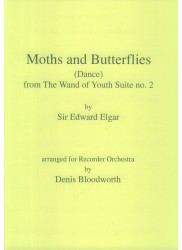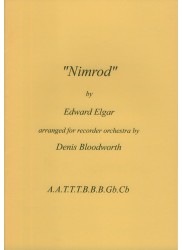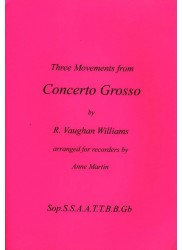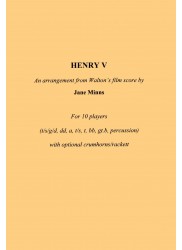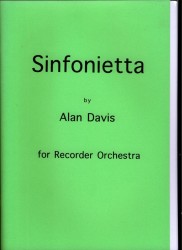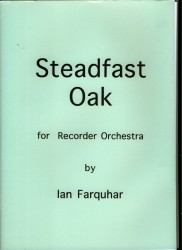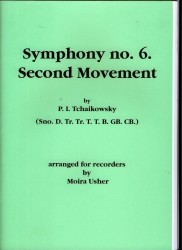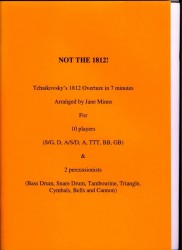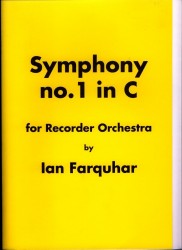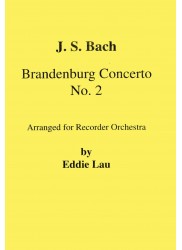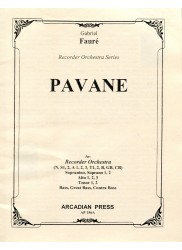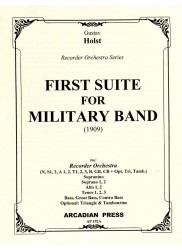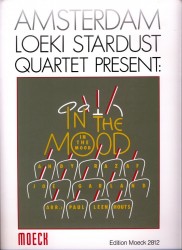No products
Prices are tax included
Canzona á 11
Composer: Araujo - Juan de
Instrumentation: S-Tr-T SATB SATB/T B GB CB
Period/Genre: Renaissance
Grade: Moderate - Difficult
More info
Renaissance composition for recorder ensemble. Translation of text below.
Until the 1970s, music from the Spanish colonial era in South America was terra incognita. Although there were a handful of publications about this music, for example by Robert Stevensen, Andres Sas, Rodolfo Holzmann and others, the music itself was completely unknown. There were no scores, no editions, let alone recordings. That changed after Arndt von Gavel, with the support of the German Research Foundation in Lima/Perú, created a series of scores, mostly of sacred works, from the material he had found in some of the country’s archives, these with his chorus of “ Asociacion Artistica y Cultural Juesves" on two discs and finally published in January 1974 in a first volume of monuments. There are now numerous publications on the subject, scores have been printed and a fair number of CDs of music from the Spanish colonial era have been released and are commercially available. In this context, the musicological investigations that took place in the former Jesuit reductions in the border areas of Bolivia, Paraguay and Argentina deserve special mention.
The creation of modern scores - an indispensable prerequisite for the practical feasibility of the music - came up against a number of difficulties: in the archives, with a few exceptions, there are no scores, only individual parts; i.e. the performance material of the bands, copied from the composer’s original scores by copyists – mostly members of the band, especially the band boys (see fig. in the cover). It is obvious that these copies are full of errors. The individual parts now had to be written together into scores that can be used today, which in practice meant post-composing. To make matters worse, some chapels, e.g. in Cuzco, the former capital of the Inca Empire, used a special, rather idiosyncratic variant of mensural notation.
The part material for the present three-choir motet “Dixit Dominus” by Juan de Araujo comes from the archives of the “Seminario San Antonio Abad” in Cuzco, a former Jesuit college. The work was first published in the above-mentioned volume of monuments "Investigaciones Musicales de los Archivos Coloniales en el Perú". Although composed about 100 years later, the work shows the characteristic features of the Venetian school of Andrea and Giovanni Gabrieli from around 1600. The original notation of the soprano, alto and tenor in the C clef has been converted into the notation for a recorder ensemble that is customary today. For this purely instrumental performance, it is advisable to differentiate the three choirs in terms of sound (e.g. high choir - high choir - low choir; recorders - woodwinds - strings; etc.). The spatially separate installation of the choirs is also recommended.
Additions by the editor are marked with ( ) above the notes.
Juan de Araujo was born around 1648 in Villafranca (Spain). As a child he came to Peru, where his father had been sent as a royal administrator. He studied music with Tomás Torrejón y Velasco (1644-1728) at the University of San Marcos in Lima. In 1672 Araujo became Kapellmeister at the Cathedral of Lima, but gave up this post in 1676 to take up the same function in the extraordinarily wealthy capital of the Audiencia de Charcas, today's Sucre (Bolivia). It remained there until his death in 1712. Next to his teacher and successor in office in Lima, Juan de Araujo was probably the most important and prolific composer in the Spanish colonial empire in South America.
_Score 17 pp. Parts 11pp._
30 other products in the same category:
Reference: P280
Brand: Peacock Press
Fantasia on Burns' Songs
Composer: Hall - Marg Instrumentation: Recorder Orchestra - Descant - 2...
In StockReference: P271
Brand: Peacock Press
La Primavera, "Spring"
Composer: Vivaldi - Antonio Arranger: Thomas Axworthy Instrumentation:...
In StockReference: P270
Brand: Peacock Press
A Taste of Africa
Composer: Farquhar - IanInstrumentation: Sopranino - 2 Descants - 2 Trebles -...
In StockReference: P267
Brand: Peacock Press
Woodland Interlude from Caractacus
Composer: Elgar - EdwardArranger: Denis BloodworthInstrumentation: 2 Descants...
In StockReference: P265
Brand: Peacock Press
Sumer is icumen in
Composer: Anonymous Arranger: Alan Davis Instrumentation: 4 Descants - 2...
In StockReference: P259
Brand: Peacock Press
Enigma Variations: Intermezzo (Dorabella)
Composer: Elgar - EdwardArranger: Denis BloodworthInstrumentation: Sopranino...
In StockReference: P258
Brand: Peacock Press
Enigma Variations: Variation 8 (WM)
Composer: Elgar - Edward Arranger: Denis Bloodworth Instrumentation:...
In StockReference: P257
Brand: Peacock Press
Enigma Variations: Variation 3 (RBT)
Composer: Elgar - EdwardArranger: Denis BloodworthInstrumentation: Sopranino...
In StockReference: P255
Brand: Peacock Press
Rosamunde Ballet Music
Composer: Schubert - FranzArranger: Ian FarquharInstrumentation: Sopranino -...
In StockReference: P246
Brand: Peacock Press
Overture: The Late Arrivals
Composer: Farquhar - IanInstrumentation: Sopranino - 2 Descants - 2 Trebles -...
In StockReference: P245
Brand: Peacock Press
Enigma & Variation 1
Composer: Elgar - EdwardArranger: Denis BloodworthInstrumentation: 2...
In StockReference: P244
Brand: Peacock Press
Chanson de Nuit
Composer: Elgar - EdwardArranger: Denis BloodworthInstrumentation: Sopranino...
In StockReference: P238
Brand: Peacock Press
Chanson de Matin
Composer: Elgar - Edward Arranger: Denis Bloodworth Instrumentation:...
In StockReference: P234
Brand: Peacock Press
Slavonic Dance No 8
Composer: Dvorak - AntoninArranger: Andrew CollisInstrumentation: Sopranino -...
In StockReference: P210
Brand: Peacock Press
Moths and Butterflies from The Wand of Youth Suite no 2
Composer: Elgar - EdwardArranger: Denis BloodworthInstrumentation: Descant -...
In StockReference: P193
Brand: Peacock Press
Nimrod
Composer: Elgar - Edward Arranger: Denis Bloodworth Instrumentation: 2...
In StockReference: P192
Brand: Peacock Press
Parodies and Paraphases on L'Homme Arme
Composer: Schofield - IanInstrumentation: Sopranino - 2 Descants - 2 Trebles...
In StockReference: P191
Brand: Peacock Press
Three Movements from Concerto Grosso
Composer: Vaughan-Williams - Ralph Arranger: Anne Martin Instrumentation:...
In StockReference: P140
Brand: Peacock Press
Henry V
Composer: Walton - WilliamArranger: Jane MinnsInstrumentation: Sopranino - 2...
In StockReference: P133
Brand: Peacock Press
Sinfonietta
Composer: Davis - AlanInstrumentation: Sopranino - 2 Descants - 2 Trebles - 2...
In StockReference: P129
Brand: Peacock Press
Steadfast Oak
Composer: Farquhar - IanInstrumentation: 2 Descants - 2 Trebles - 2 Tenors -...
In StockReference: P078
Brand: Peacock Press
Symphony no 6 2nd movement
Composer: Tchaikovsky - Pyotr IlyichArranger: Moira UsherInstrumentation:...
In StockReference: P077
Brand: Peacock Press
Not the 1812!
Composer: Tchaikovsky - Pyotr IlyichArranger: Jane MinnsInstrumentation:...
In StockReference: P076
Brand: Peacock Press
Symphony No1in C
Composer: Farquhar - IanInstrumentation: Recorder OrchestraPeriod/genre:...
In StockReference: P066
Brand: Peacock Press
Crucifixus a 10
Composer: Lotti - AntonioArranger: Helen HookerInstrumentation: 3 Descants -...
In StockReference: P046
Brand: Peacock Press
Brandenburg Concerto No 2 for Solo Descant BWV-1047
Composer: Bach - Johann Sebastian Arranger: Eddie Lau Instrumentation:...
In StockReference: AP156a
Brand: Arcadian Press
Pavane
Composer: Faure - GabrielInstrumentation: Sopranino - 2 Descants - 3 Trebles...
In StockReference: AP192A
Brand: Arcadian Press
First Suite for Military Band (1909) or Recorder Orchestra
Composer: Holst - Gustav Instrumentation: Sopranino - 2 Descants - 2 Trebles...
In StockReference: AP193A
Brand: Arcadian Press
I've Got You Under My Skin
Composer: Porter - ColeInstrumentation: Sopranino - 2 Descants - 3 Trebles -...
In StockReference: M2812
Brand: Moeck
In the Mood
Composer: Garland/Razaf Arranger: Paul Leenhouts Instrumentation: Sopranino...
In Stock
